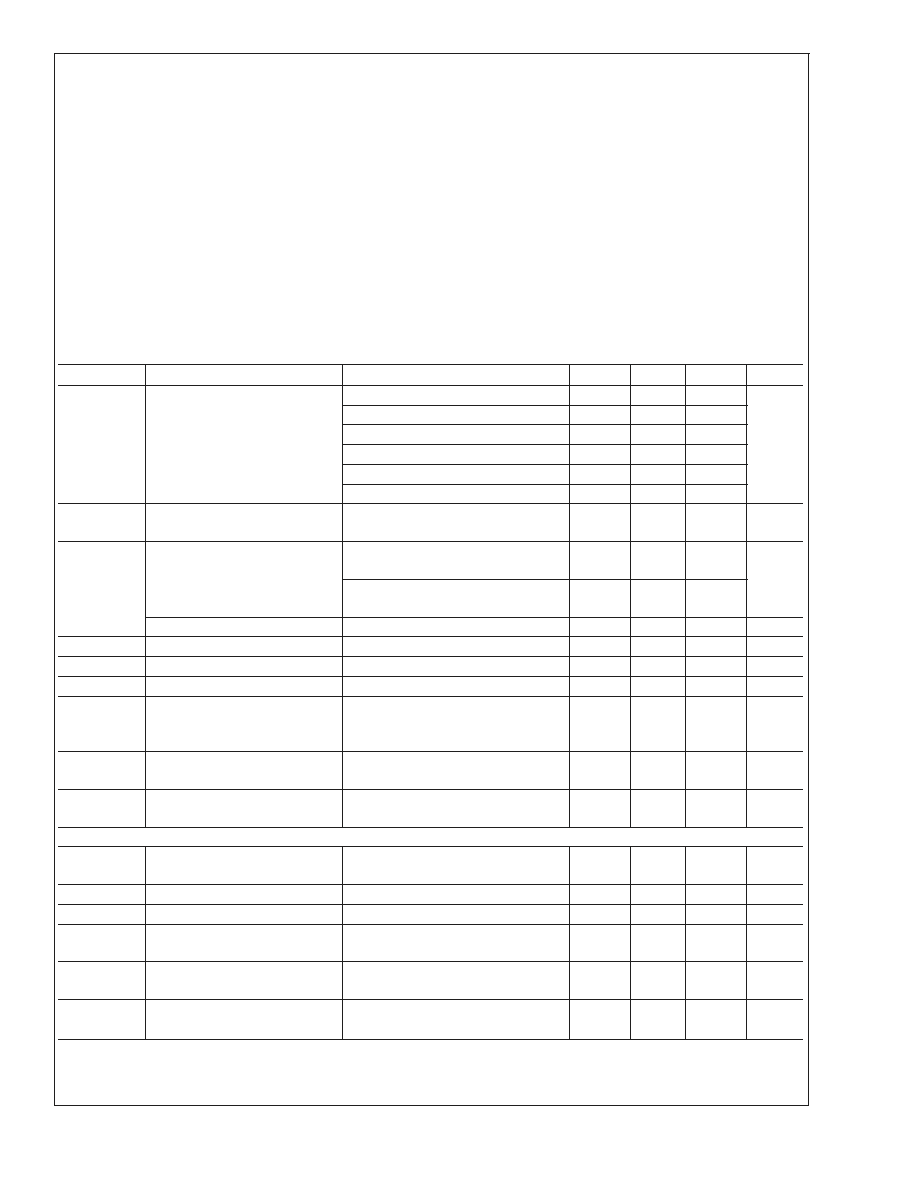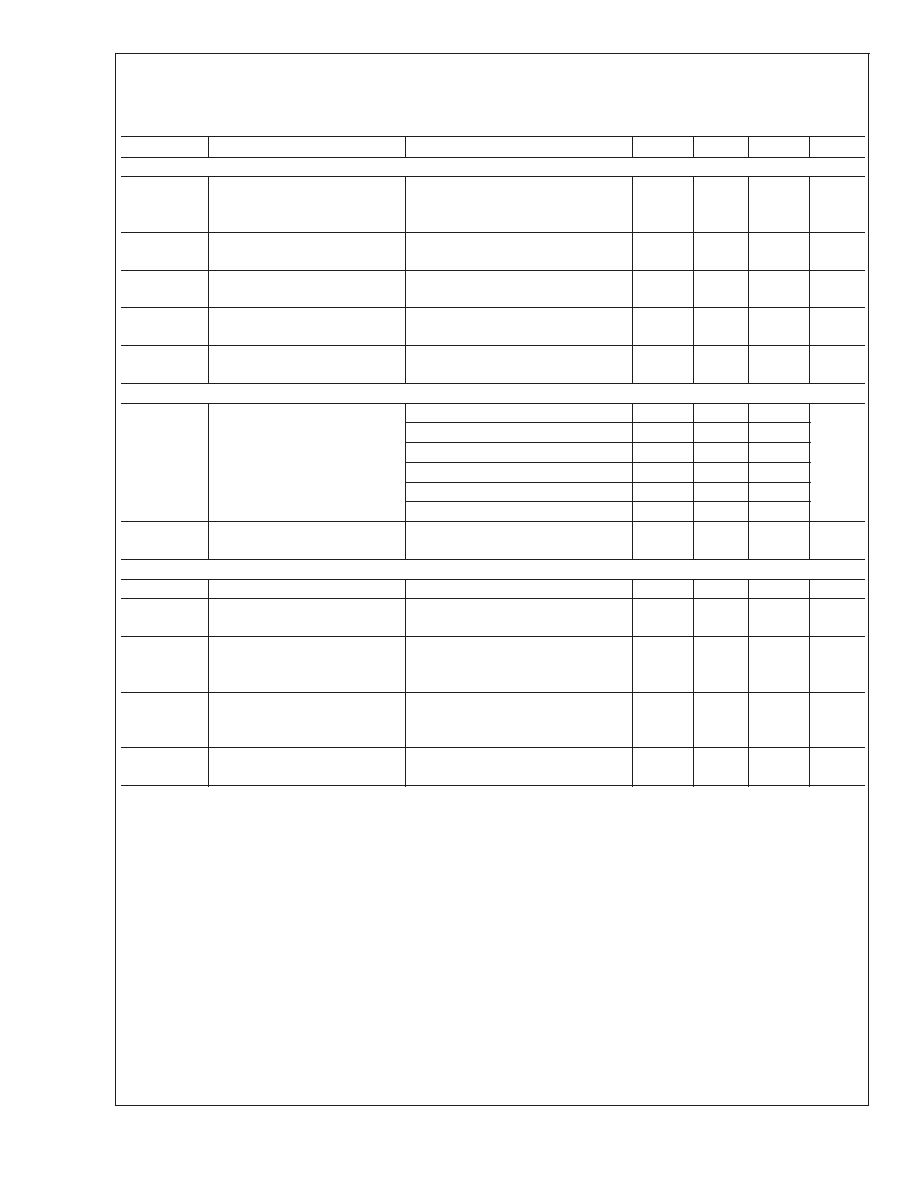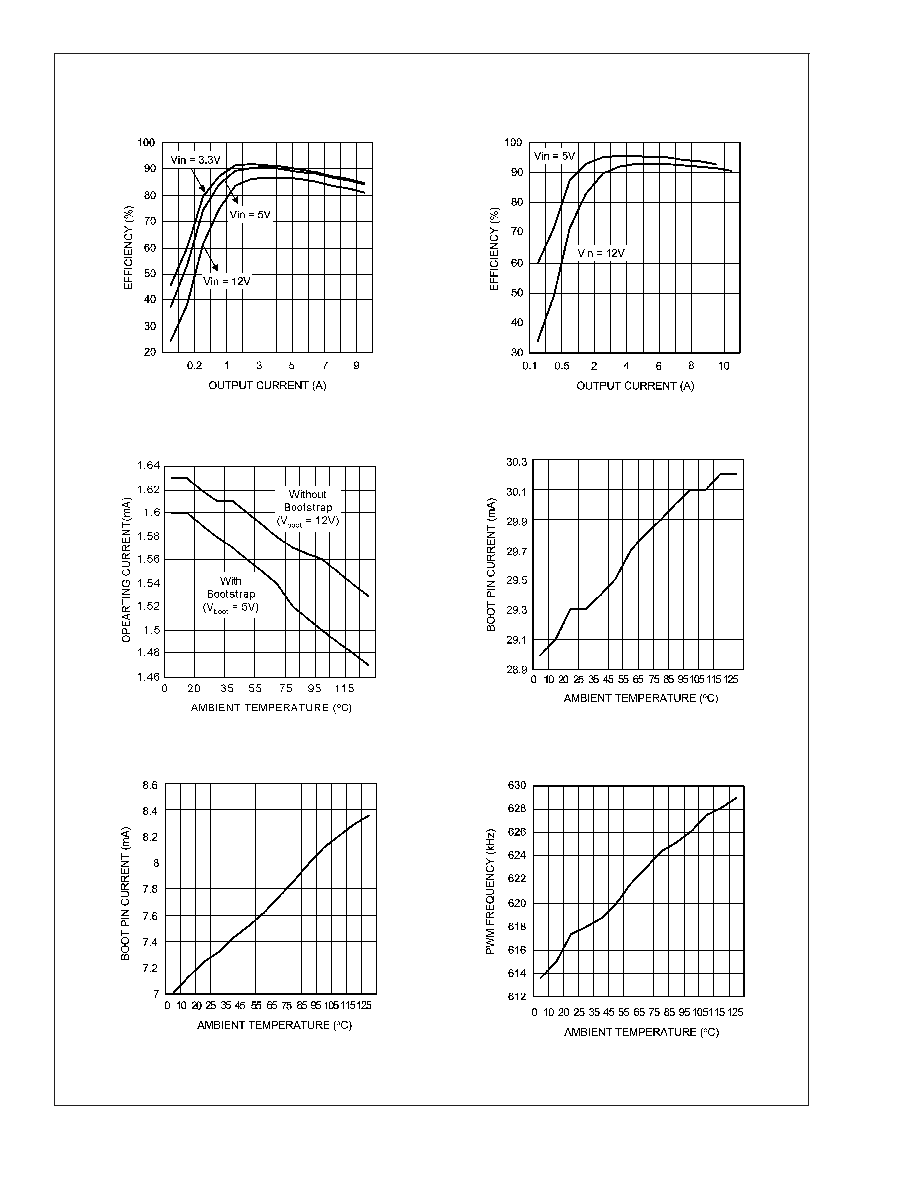 | –≠–ª–µ–∫—Ç—Ä–æ–Ω–Ω—ã–π –∫–æ–º–ø–æ–Ω–µ–Ω—Ç: 16MV680WG | –°–∫–∞—á–∞—Ç—å:  PDF PDF  ZIP ZIP |
Document Outline
- LM2727/LM2737
- General Description
- Features
- Applications
- Typical Application
- Connection Diagram
- Pin Description
- Absolute Maximum Ratings
- Operating Ratings
- Electrical Characteristics
- Typical Performance Characteristics
- Block Diagram
- Application Information
- Example Circuits
- FIGURE 2. 5V-16V to 3.3V, 10A, 300kHz
- FIGURE 3. 5V to 1.2V, 10A, 300kHz
- FIGURE 4. 5V to 1.8V, 3A, 600kHz
- FIGURE 5. 3.3V to 0.8V, 5A, 500kHz
- FIGURE 6. 1.8V and 3.3V, 1A, 1.4MHz, Simultaneous
- FIGURE 7. 12V Unregulated to 3.3V, 3A, 750kHz
- FIGURE 8. 12V to 5V, 1.8A, 100kHz
- TABLE 1. Bill of Materials for Typical Application Circuit
- TABLE 2. Bill of Materials for Circuit of (Identical to BOM for 1.5V except as noted below)
- TABLE 3. Bill of Materials for Circuit of
- TABLE 4. Bill of Materials for Circuit of
- TABLE 5. Bill of Materials for Circuit of
- TABLE 6. Bill of Materials for Circuit of
- TABLE 7. Bill of Materials for 3.3V Circuit of (Identical to BOM for 1.8V except as noted below)
- TABLE 8. Bill of Materials for Circuit of
- TABLE 9. Bill of Materials for Circuit of
- Physical Dimensions

LM2727/LM2737
N-Channel FET Synchronous Buck Regulator Controller
for Low Output Voltages
General Description
The LM2727 and LM2737 are high-speed, synchronous,
switching regulator controllers. They are intended to control
currents of 0.7A to 20A with up to 95% conversion efficien-
cies. The LM2727 employs output over-voltage and under-
voltage latch-off. For applications where latch-off is not de-
sired, the LM2737 can be used. Power up and down
sequencing is achieved with the power-good flag, adjustable
soft-start and output enable features. The LM2737 and
LM2737 operate from a low-current 5V bias and can convert
from a 2.2V to 16V power rail. Both parts utilize a fixed-
frequency, voltage-mode, PWM control architecture and the
switching frequency is adjustable from 50kHz to 2MHz by
adjusting the value of an external resistor. Current limit is
achieved by monitoring the voltage drop across the on-
resistance of the low-side MOSFET, which enhances low
duty-cycle operation. The wide range of operating frequen-
cies gives the power supply designer the flexibility to fine-
tune component size, cost, noise and efficiency. The adap-
tive, non-overlapping MOSFET gate-drivers and high-side
bootstrap structure helps to further maximize efficiency. The
high-side power FET drain voltage can be from 2.2V to 16V
and the output voltage is adjustable down to 0.6V.
Features
n
Input power from 2.2V to 16V
n
Output voltage adjustable down to 0.6V
n
Power Good flag, adjustable soft-start and output enable
for easy power sequencing
n
Output over-voltage and under-voltage latch-off
(LM2727)
n
Output over-voltage and under-voltage flag (LM2737)
n
Reference Accuracy: 1.5% (0∞C - 125∞C)
n
Current limit without sense resistor
n
Soft start
n
Switching frequency from 50 kHz to 2 MHz
n
TSSOP-14 package
Applications
n
Cable Modems
n
Set-Top Boxes/ Home Gateways
n
DDR Core Power
n
High-Efficiency Distributed Power
n
Local Regulation of Core Power
Typical Application
20049410
June 2003
LM2727/LM2737
N-Channel
FET
Synchronous
Buck
Regulator
Controller
for
Low
Output
V
oltages
© 2003 National Semiconductor Corporation
DS200494
www.national.com

Connection Diagram
20049411
14-Lead Plastic TSSOP
JA
= 155∞C/W
NS Package Number MTC14
Pin Description
BOOT (Pin 1) - Supply rail for the N-channel MOSFET gate
drive. The voltage should be at least one gate threshold
above the regulator input voltage to properly turn on the
high-side N-FET.
LG (Pin 2) - Gate drive for the low-side N-channel MOSFET.
This signal is interlocked with HG to avoid shoot-through
problems.
PGND (Pins 3, 13) - Ground for FET drive circuitry. It should
be connected to system ground.
SGND (Pin 4) - Ground for signal level circuitry. It should be
connected to system ground.
V
CC
(Pin 5) - Supply rail for the controller.
PWGD (Pin 6) - Power Good. This is an open drain output.
The pin is pulled low when the chip is in UVP, OVP, or UVLO
mode. During normal operation, this pin is connected to V
CC
or other voltage source through a pull-up resistor.
ISEN (Pin 7) - Current limit threshold setting. This sources a
fixed 50µA current. A resistor of appropriate value should be
connected between this pin and the drain of the low-side
FET.
EAO (Pin 8) - Output of the error amplifier. The voltage level
on this pin is compared with an internally generated ramp
signal to determine the duty cycle. This pin is necessary for
compensating the control loop.
SS (Pin 9) - Soft start pin. A capacitor connected between
this pin and ground sets the speed at which the output
voltage ramps up. Larger capacitor value results in slower
output voltage ramp but also lower inrush current.
FB (Pin 10) - This is the inverting input of the error amplifier,
which is used for sensing the output voltage and compen-
sating the control loop.
FREQ (Pin 11) - The switching frequency is set by connect-
ing a resistor between this pin and ground.
SD (Pin 12) - IC Logic Shutdown. When this pin is pulled low
the chip turns off the high side switch and turns on the low
side switch. While this pin is low, the IC will not start up. An
internal 20µA pull-up connects this pin to V
CC
.
HG (Pin 14) - Gate drive for the high-side N-channel MOS-
FET. This signal is interlocked with LG to avoid shoot-
through problems.
LM2727/LM2737
www.national.com
2

Absolute Maximum Ratings
(Note 1)
If Military/Aerospace specified devices are required,
please contact the National Semiconductor Sales Office/
Distributors for availability and specifications.
V
CC
7V
BOOTV
21V
Junction Temperature
150∞C
Storage Temperature
-65∞C to 150∞C
Soldering Information
Lead Temperature
(soldering, 10sec)
260∞C
Infrared or Convection (20sec)
235∞C
ESD Rating
2 kV
Operating Ratings
Supply Voltage (V
CC
)
4.5V to 5.5V
Junction Temperature Range
-40∞C to +125∞C
Thermal Resistance (
JA
)
155∞C/W
Electrical Characteristics
V
CC
= 5V unless otherwise indicated. Typicals and limits appearing in plain type apply for T
A
=T
J
=+25∞C. Limits appearing in
boldface type apply over full Operating Temperature Range. Datasheet min/max specification limits are guaranteed by design,
test, or statistical analysis.
Symbol
Parameter
Conditions
Min
Typ
Max
Units
V
FB_ADJ
FB Pin Voltage
V
CC
= 4.5V, 0∞C to +125∞C
0.591
0.6
0.609
V
V
CC
= 5V, 0∞C to +125∞C
0.591
0.6
0.609
V
CC
= 5.5V, 0∞C to +125∞C
0.591
0.6
0.609
V
CC
= 4.5V, -40∞C to +125∞C
0.589
0.6
0.609
V
CC
= 5V, -40∞C to +125∞C
0.589
0.6
0.609
V
CC
= 5.5V, -40∞C to +125∞C
0.589
0.6
0.609
V
ON
UVLO Thresholds
Rising
Falling
4.2
3.6
V
I
Q-V5
Operating V
CC
Current
SD = 5V, FB = 0.55V
Fsw = 600kHz
1
1.5
2
mA
SD = 5V, FB = 0.65V
Fsw = 600kHz
0.8
1.7
2.2
Shutdown V
CC
Current
SD = 0V
0.15
0.4
0.7
mA
t
PWGD1
PWGD Pin Response Time
FB Voltage Going Up
6
µs
t
PWGD2
PWGD Pin Response Time
FB Voltage Going Down
6
µs
I
SD
SD Pin Internal Pull-up Current
20
µA
I
SS-ON
SS Pin Source Current
SS Voltage = 2.5V
0∞C to +125∞C
-40∞C to +125∞C
8
5
11
11
15
15
µA
I
SS-OC
SS Pin Sink Current During Over
Current
SS Voltage = 2.5V
95
µA
I
SEN-TH
I
SEN
Pin Source Current Trip
Point
0∞C to +125∞C
-40∞C to +125∞C
35
28
50
50
65
65
µA
ERROR AMPLIFIER
GBW
Error Amplifier Unity Gain
Bandwidth
5
MHz
G
Error Amplifier DC Gain
60
dB
SR
Error Amplifier Slew Rate
6
V/µA
I
FB
FB Pin Bias Current
FB = 0.55V
FB = 0.65V
0
0
15
30
100
155
nA
I
EAO
EAO Pin Current Sourcing and
Sinking
V
EAO
= 2.5, FB = 0.55V
V
EAO
= 2.5, FB = 0.65V
2.8
0.8
mA
V
EA
Error Amplifier Maximum Swing
Minimum
Maximum
1.2
3.2
V
LM2727/LM2737
www.national.com
3

Electrical Characteristics
(Continued)
V
CC
= 5V unless otherwise indicated. Typicals and limits appearing in plain type apply for T
A
=T
J
=+25∞C. Limits appearing in
boldface type apply over full Operating Temperature Range. Datasheet min/max specification limits are guaranteed by design,
test, or statistical analysis.
Symbol
Parameter
Conditions
Min
Typ
Max
Units
GATE DRIVE
I
Q-BOOT
BOOT Pin Quiescent Current
BOOTV = 12V, EN = 0
0∞C to +125∞C
-40∞C to +125∞C
95
95
160
215
µA
R
DS1
Top FET Driver Pull-Up ON
resistance
BOOT-SW = 5V
@
350mA
3
R
DS2
Top FET Driver Pull-Down ON
resistance
BOOT-SW = 5V
@
350mA
2
R
DS3
Bottom FET Driver Pull-Up ON
resistance
BOOT-SW = 5V
@
350mA
3
R
DS4
Bottom FET Driver Pull-Down
ON resistance
BOOT-SW = 5V
@
350mA
2
OSCILLATOR
f
OSC
PWM Frequency
R
FADJ
= 590k
50
kHz
R
FADJ
= 88.7k
300
R
FADJ
= 42.2k
, 0∞C to +125∞C
500
600
700
R
FADJ
= 42.2k
, -40∞C to +125∞C
490
600
700
R
FADJ
= 17.4k
1400
R
FADJ
= 11.3k
2000
D
Max Duty Cycle
f
PWM
= 300kHz
f
PWM
= 600kHz
90
88
%
LOGIC INPUTS AND OUTPUTS
V
SD-IH
SD Pin Logic High Trip Point
2.6
3.5
V
V
SD-IL
SD Pin Logic Low Trip Point
0∞C to +125∞C
-40∞C to +125∞C
1.3
1.25
1.6
1.6
V
V
PWGD-TH-LO
PWGD Pin Trip Points
FB Voltage Going Down
0∞C to +125∞C
-40∞C to +125∞C
0.413
0.410
0.430
0.430
0.446
0.446
V
V
PWGD-TH-HI
PWGD Pin Trip Points
FB Voltage Going Up
0∞C to +125∞C
-40∞C to +125∞C
0.691
0.688
0.710
0.710
0.734
0.734
V
V
PWGD-HYS
PWGD Hysteresis (LM2737 only) FB Voltage Going Down FB Voltage
Going Up
35
110
mV
Note 1: Absolute maximum ratings indicate limits beyond which damage to the device may occur. Operating ratings indicate conditions for which the device
operates correctly. Opearting Ratings do not imply guaranteed performance limits.
Note 2: The human body model is a 100pF capacitor discharged through a 1.5k resistor into each pin.
LM2727/LM2737
www.national.com
4

Typical Performance Characteristics
Efficiency (V
O
= 1.5V)
F
SW
= 300kHz, T
A
= 25∞C
Efficiency (V
O
= 3.3V)
F
SW
= 300kHz, T
A
= 25∞C
20049412
20049413
V
CC
Operating Current vs Temperature
F
SW
= 600kHz, No-Load
Bootpin Current vs Temperature for BOOTV = 12V
F
SW
= 600kHz, Si4826DY FET, No-Load
20049414
20049415
Bootpin Current vs Temperature with 5V Bootstrap
F
SW
= 600kHz, Si4826DY FET, No-Load
PWM Frequency vs Temperature
for R
FADJ
= 43.2k
20049416
20049417
LM2727/LM2737
www.national.com
5




